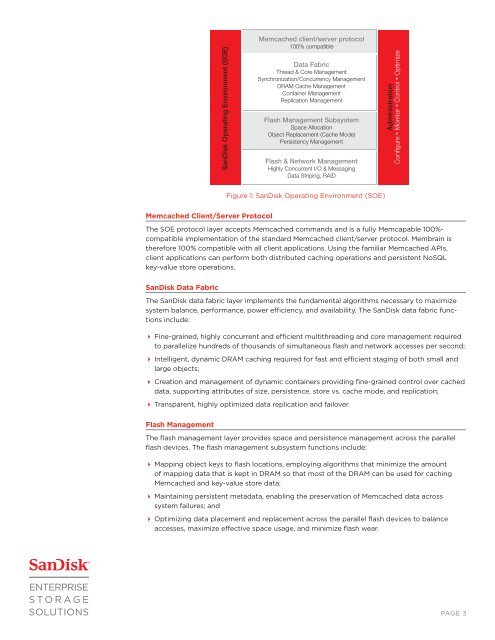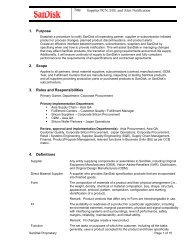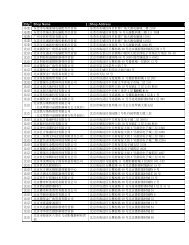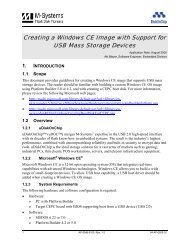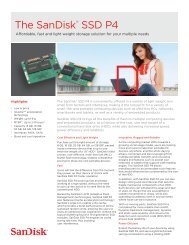Membrain Software White Paper - SanDisk
Membrain Software White Paper - SanDisk
Membrain Software White Paper - SanDisk
Create successful ePaper yourself
Turn your PDF publications into a flip-book with our unique Google optimized e-Paper software.
<strong>SanDisk</strong> Operating Environment (SOE)<br />
Memcached client/server protocol<br />
100% compatible<br />
Data Fabric<br />
Thread & Core Management<br />
Synchronization/Concurrency Management<br />
DRAM Cache Management<br />
Container Management<br />
Replication Management<br />
Flash Management Subsystem<br />
Space Allocation<br />
Object Replacement (Cache Mode)<br />
Persistency Management<br />
Flash & Network Management<br />
Highly Concurrent I/O & Messaging<br />
Data Striping, RAID<br />
Administration<br />
Configure • Monitor • Control • Optimize<br />
Figure 1: <strong>SanDisk</strong> Operating Environment (SOE)<br />
Memcached Client/Server Protocol<br />
The SOE protocol layer accepts Memcached commands and is a fully Memcapable 100%-<br />
compatible implementation of the standard Memcached client/server protocol. <strong>Membrain</strong> is<br />
therefore 100% compatible with all client applications. Using the familiar Memcached APIs,<br />
client applications can perform both distributed caching operations and persistent NoSQL<br />
key-value store operations.<br />
<strong>SanDisk</strong> Data Fabric<br />
The <strong>SanDisk</strong> data fabric layer implements the fundamental algorithms necessary to maximize<br />
system balance, performance, power efficiency, and availability. The <strong>SanDisk</strong> data fabric functions<br />
include:<br />
Fine-grained, highly concurrent and efficient multithreading and core management required<br />
to parallelize hundreds of thousands of simultaneous flash and network accesses per second;<br />
Intelligent, dynamic DRAM caching required for fast and efficient staging of both small and<br />
large objects;<br />
Creation and management of dynamic containers providing fine-grained control over cached<br />
data, supporting attributes of size, persistence, store vs. cache mode, and replication;<br />
Transparent, highly optimized data replication and failover.<br />
Flash Management<br />
The flash management layer provides space and persistence management across the parallel<br />
flash devices. The flash management subsystem functions include:<br />
Mapping object keys to flash locations, employing algorithms that minimize the amount<br />
of mapping data that is kept in DRAM so that most of the DRAM can be used for caching<br />
Memcached and key-value store data;<br />
Maintaining persistent metadata, enabling the preservation of Memcached data across<br />
system failures; and<br />
Optimizing data placement and replacement across the parallel flash devices to balance<br />
accesses, maximize effective space usage, and minimize flash wear.<br />
PAGE 3


